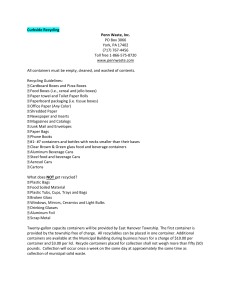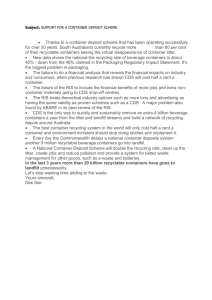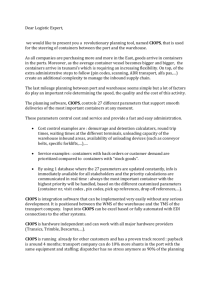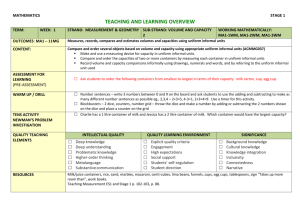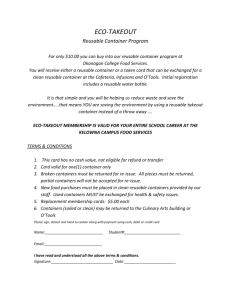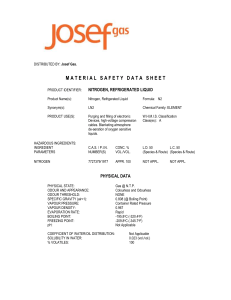Plant and Animal Relationships: Snail Lab
advertisement
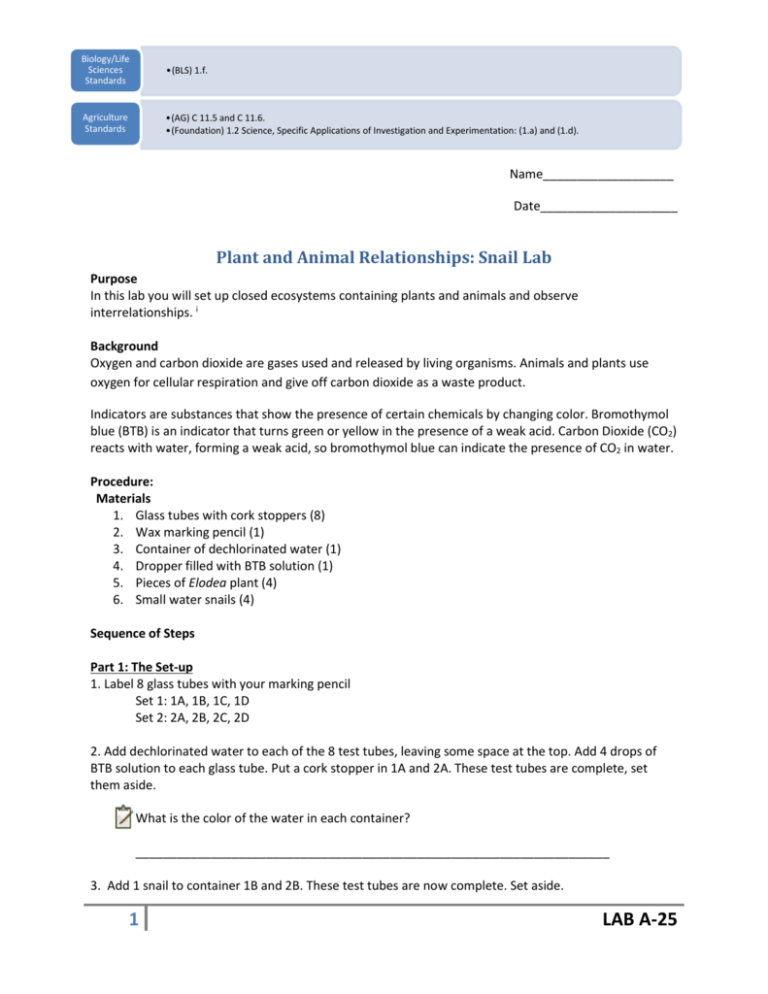
Biology/Life Sciences Standards •(BLS) 1.f. Agriculture Standards •(AG) C 11.5 and C 11.6. •(Foundation) 1.2 Science, Specific Applications of Investigation and Experimentation: (1.a) and (1.d). Name___________________ Date____________________ Plant and Animal Relationships: Snail Lab Purpose In this lab you will set up closed ecosystems containing plants and animals and observe interrelationships. i Background Oxygen and carbon dioxide are gases used and released by living organisms. Animals and plants use oxygen for cellular respiration and give off carbon dioxide as a waste product. Indicators are substances that show the presence of certain chemicals by changing color. Bromothymol blue (BTB) is an indicator that turns green or yellow in the presence of a weak acid. Carbon Dioxide (CO2) reacts with water, forming a weak acid, so bromothymol blue can indicate the presence of CO2 in water. Procedure: Materials 1. Glass tubes with cork stoppers (8) 2. Wax marking pencil (1) 3. Container of dechlorinated water (1) 4. Dropper filled with BTB solution (1) 5. Pieces of Elodea plant (4) 6. Small water snails (4) Sequence of Steps Part 1: The Set-up 1. Label 8 glass tubes with your marking pencil Set 1: 1A, 1B, 1C, 1D Set 2: 2A, 2B, 2C, 2D 2. Add dechlorinated water to each of the 8 test tubes, leaving some space at the top. Add 4 drops of BTB solution to each glass tube. Put a cork stopper in 1A and 2A. These test tubes are complete, set them aside. What is the color of the water in each container? _____________________________________________________________________ 3. Add 1 snail to container 1B and 2B. These test tubes are now complete. Set aside. 1 LAB A-25 4. Add one piece of Elodea plant to containers 1C and 2C. Put a cork stopper on them and set them aside, they are now complete. 5. Add one snail and one piece of Elodea plant to each container 1D and 2D. Place cork stoppers to close the container and set them aside, they are now complete. Which container in each set is the control? Why do you think that? _________________________________________________________________ _________________________________________________________________ Would you predict a color change in the control containers? Why? _________________________________________________________________ _________________________________________________________________ 6. Place set 1 (1A-1D) in a place it will be able to get a good amount of light over the next few days. Find a lab station where you can put your samples. 7. Place set 2 (2A-2D) in the cabinet where it will be dark for the next few days. 8. Clean up your work area and wash your hands before you return to your seats. Part 2: Observations on Day 2 1. Observe both sets of containers. In order to see the true color, you may want to put a piece of white paper behind the container. Record the color of the water and the condition of the organisms in the table below. (Notice the BTB Solution color) Table 1 Set 1 (in light) container color Set 2 (in Dark) organisms container 1A 2A 1B 2B 1C 2C 2 color organisms LAB A-25 1D 2D Do corresponding containers (1A and 2A, 1B and 2B, etc.) from the two sets show the same color change? _________________________________________________________________ _________________________________________________________________ What caused the color change in some of the containers? _________________________________________________________________ _________________________________________________________________ 2. Put your containers back after recording your observations (set 1 in the light, set 2 in the dark). Part 3: Observations on Day 3 1. On Day 3, observe both sets of containers. Record your observations in the data table below. (Notice the BTB Solution color) Table 2 Set 1 (in light) container color Set 2 (in Dark) organisms container 1A 2A 1B 2B 1C 2C 1D 2D 3 color organisms LAB A-25 Which set of containers showed the greatest change with regard to plant and animal life? _________________________________________________________________ _________________________________________________________________ _________________________________________________________________ 2. Dispose of your materials. Put the snails and plant material in the trash or outside in the dirt. Dump the water and solution down the sink and rinse them out. Be sure the glass containers, stoppers, and all other materials are clean! Use a paper towel to wipe off the writing on the glass containers. Put all items away in their designated area. 3. Clean up your work area and wash your hands before leaving class. Why were containers 1A and 2A used even though no organisms were placed in them? _________________________________________________________________ _________________________________________________________________ _________________________________________________________________ If the indicator had changed color in containers 1A and 2A, how would you explain it? _________________________________________________________________ _________________________________________________________________ _________________________________________________________________ Both Elodea and snails live well in a fish tank. Explain what occurred in container 1D. _________________________________________________________________ _________________________________________________________________ _________________________________________________________________ _________________________________________________________________ _________________________________________________________________ _________________________________________________________________ 4 LAB A-25 Explain how the process of cellular respiration and photosynthesis are dependent on each other. _________________________________________________________________ _________________________________________________________________ _________________________________________________________________ _________________________________________________________________ _________________________________________________________________ _________________________________________________________________ i Jill, Sperling (2008).Plant and animal relationships, lab. Kingsburg High School Ag Department. 5 LAB A-25


